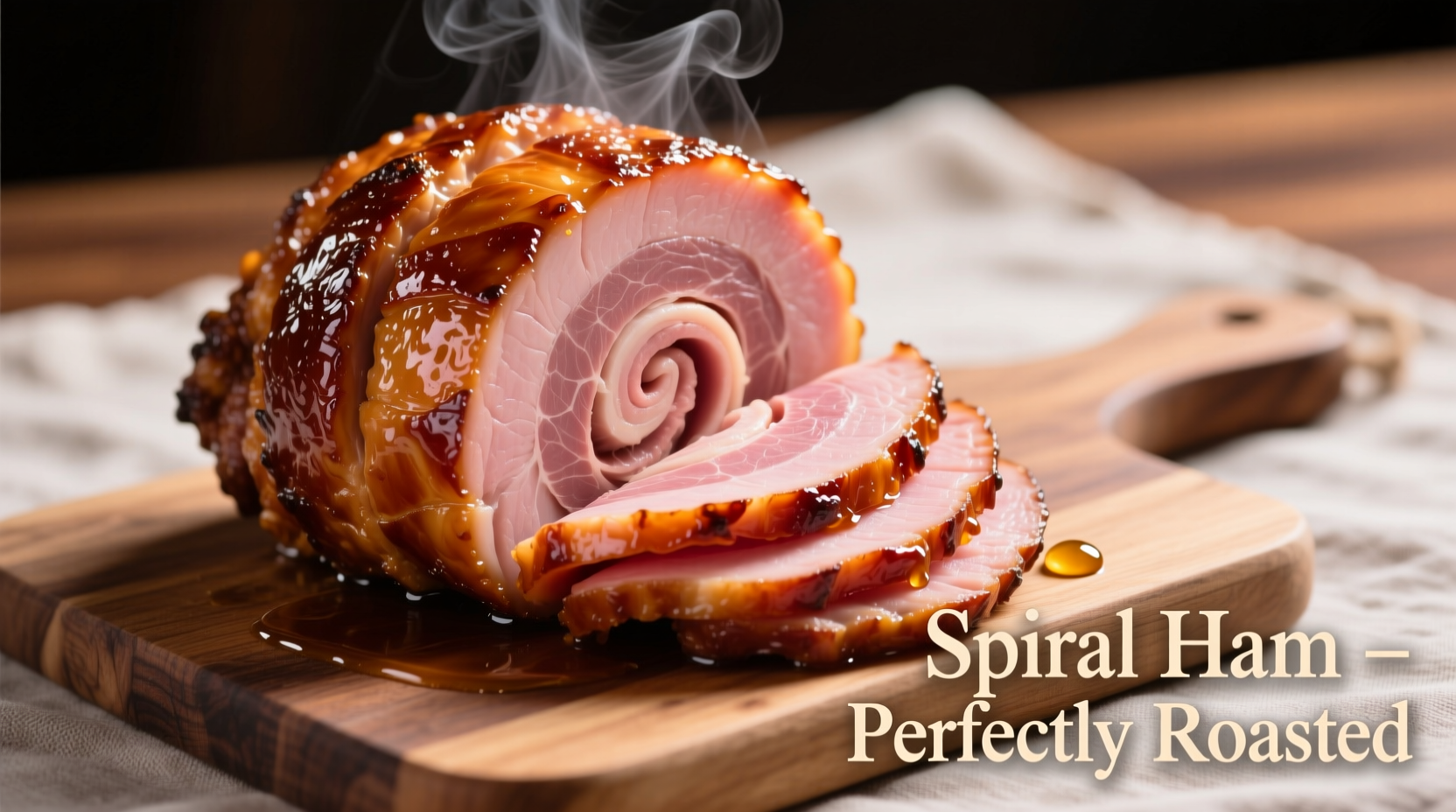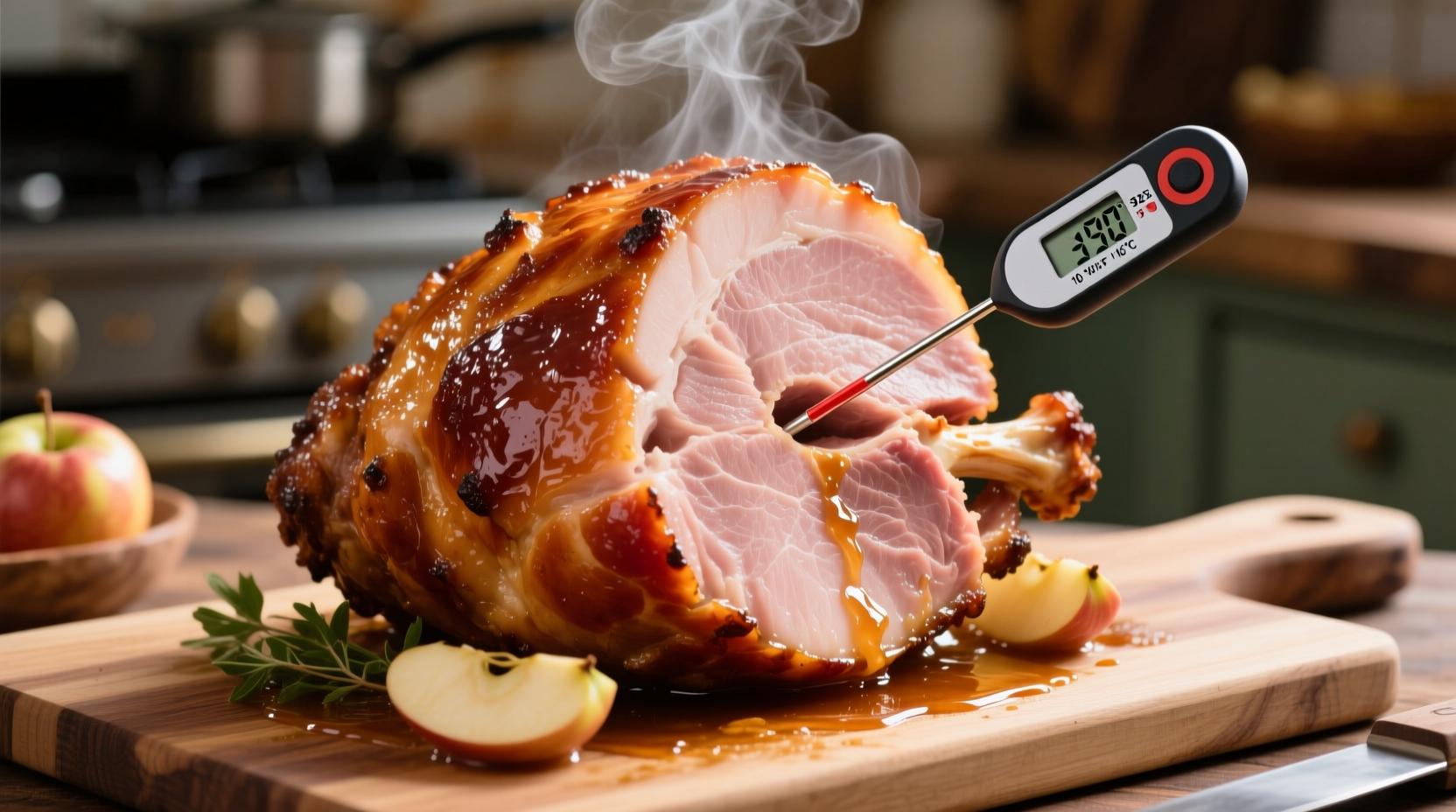Perfect Ham Cooking Times: Your Complete Guide
Nothing says celebration like a perfectly cooked ham, but getting the timing right can make or break your meal. Whether you're preparing a holiday centerpiece or a Sunday dinner, understanding exactly how long to cook a ham ensures juicy, flavorful results every time. This guide eliminates guesswork with precise timing based on ham type, weight, and cooking method—all verified by food safety standards.
Why Ham Cooking Time Matters
Undercooked ham risks foodborne illness, while overcooked ham becomes dry and tough. The USDA Food Safety and Inspection Service emphasizes that proper cooking time combined with temperature verification is essential for safe ham preparation. Different ham varieties require distinct approaches, making it crucial to identify your ham type before cooking.
Identifying Your Ham Type Before Cooking
Not all hams cook the same. Your ham cooking time calculation starts with proper identification:
- Pre-cooked/cured hams (most common): Already cooked through smoking or baking. Just needs reheating. Look for "fully cooked," "ready to eat," or "heat-and-serve" on packaging.
- Fresh hams: Raw and uncured. Must be fully cooked. Rare in most grocery stores.
- Partially cooked hams: Requires full cooking but less time than fresh. Check packaging carefully.
| Ham Type | Weight Range | Cooking Time (325°F) | Internal Temp |
|---|---|---|---|
| Pre-cooked, bone-in | 6-8 lbs | 10-14 minutes/lb | 140°F |
| Pre-cooked, boneless | 5-7 lbs | 12-15 minutes/lb | 140°F |
| Fresh, bone-in | 10-14 lbs | 20-25 minutes/lb | 145°F + 3 min rest |
| Fresh, boneless | 6-8 lbs | 22-28 minutes/lb | 145°F + 3 min rest |
Practical Cooking Timeline for Perfect Results
Follow this step-by-step sequence for foolproof ham preparation:
Preparation Phase (30 Minutes Before Cooking)
Remove ham from refrigerator 30 minutes before cooking to reduce temperature shock. Score the fat cap in a diamond pattern for better heat penetration and glaze absorption. Place ham fat-side up in roasting pan with 1–2 cups of liquid (water, broth, or apple juice) to maintain moisture during the ham baking duration.
Cooking Phase: Timing and Temperature Control
Preheat oven to 325°F—higher temperatures cause uneven cooking. Insert meat thermometer into thickest part, avoiding bone. For pre-cooked hams, cook until internal temperature reaches 140°F. For fresh hams, cook to 145°F followed by 3-minute rest time. During the last 20 minutes, apply your preferred glaze for caramelization without burning.

Contextual Factors That Affect Cooking Time
Several variables impact your exact ham cooking time, requiring adjustment from standard guidelines:
- Starting temperature: Chilled ham adds 10-15% to cooking time versus room-temperature ham
- Oven accuracy: Verify with independent oven thermometer (many home ovens run 25°F hot or cold)
- Ham shape: Spiral-cut hams cook 10-15% faster due to increased surface area
- Pan type: Dark metal pans reduce cooking time by 5-10% compared to glass or ceramic
The USDA Food Safety and Inspection Service confirms that bone-in hams generally require slightly longer cooking than boneless varieties due to heat distribution around the bone (USDA FSIS, 2024).
Doneness Verification: Beyond Just Timing
Timing provides a guideline, but temperature verification is non-negotiable for food safety. The National Center for Home Food Preservation states that visual cues alone (like meat pulling from bone) are unreliable indicators of doneness. Always use a calibrated instant-read thermometer:
- Pre-cooked hams: 140°F minimum
- Fresh hams: 145°F minimum with 3-minute rest period
- Never rely on color change as an indicator
After removing from oven, let ham rest 15-20 minutes. Internal temperature will rise 5-10°F during this carryover cooking phase—critical for proper ham cooking time calculation.
Troubleshooting Common Ham Cooking Issues
Dry ham? Likely overcooked or insufficient pan liquid. Next time, reduce cooking time by 5 minutes per pound and increase liquid in pan.
Undercooked spots? Common with bone-in hams. Rotate pan 180 degrees halfway through cooking for even heat distribution.
Glaze burning? Apply during last 20 minutes only, or tent with foil if browning too quickly.
Advanced Timing Adjustments for Special Situations
Cooking multiple hams? Increase time by 10-15% due to oven temperature fluctuations. For spiral-cut hams, reduce standard cooking time by 10-15% and cover with foil to prevent drying. When using convection ovens, decrease temperature by 25°F and reduce cooking time by 25% for proper how long to bake a ham results.











 浙公网安备
33010002000092号
浙公网安备
33010002000092号 浙B2-20120091-4
浙B2-20120091-4